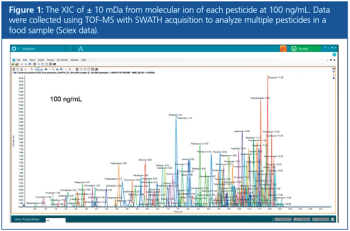
A new high-throughput LC–MS/MS method meets the challenge of eliminating matrix effects for monitoring, with high specificity, polar organic pesticides such as glyphosate in food and water, while meeting targeted limits of detection.
Phil Taylor is a freelance pharmaceutical writer and editor based in the United Kingdom. He has been covering IPEC issues since 2003. IPEC, the International Pharmaceutical Excipients Council, is made up of three independent associations: the Americas, Japan, and Europe.

A new high-throughput LC–MS/MS method meets the challenge of eliminating matrix effects for monitoring, with high specificity, polar organic pesticides such as glyphosate in food and water, while meeting targeted limits of detection.

You don’t have to look far to find headlines such as “PFAS Chemicals in Drinking Water Prompts Restrictions” (1) or “Toxic Algae Discovered in Waterways off Lake Tahoe” (2). These two examples highlight key environmental concerns, and laboratories are feeling the demands to perform more of these tests. The first headline relates to the pollution from per- and polyfluorinated alkyl substances (PFASs) and the latter is attributed to the problems of microcystins and nodularins in water. This article will look into analytical workflows that can be applied to the testing of these “in demand” compounds.

Food testing laboratories worldwide are responsible for checking the presence of regulated pesticide residues on food products because these chemicals can be harmful to health and the environment. These laboratories have traditionally relied on gas chromatography coupled with mass spectrometry (GC–MS) for rapid and reliable pesticide detection in large sample numbers. However, changing regulations and increasingly diverse pesticides are driving the need for alternative liquid chromatography tandem mass spectrometry (LC–MS/MS)- based methods for comprehensive screening.

Published: August 22nd 2017 | Updated:

Published: October 24th 2017 | Updated: